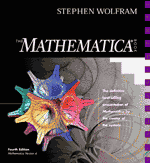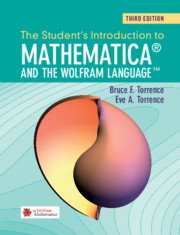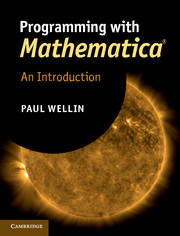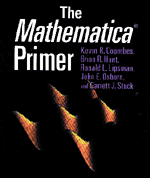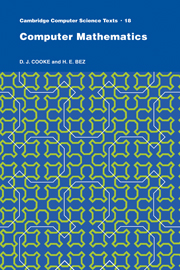The MATHEMATICA ® Book, Version 4
With over a million users around the world, the Mathematica software system created by Stephen Wolfram has defined the direction of technical computing for the past decade. The enhanced text and hypertext processing and state-of-the-art numerical computation features ensure that Mathematica 4 takes scientific computing into the next century. New to this version: visual tour of key features, practical tutorial introduction, full descriptions of 1100 built-in functions, a thousand illustrative examples, easy-to-follow descriptive tables, essays highlighting key concepts, examples of data import and export, award-winning gallery of Mathematica graphics, gallery of mathematical typesetting, dictionary of 700 special characters, a complete guide to the MathLink API, notes on internal implementation, and an index with over 10,000 entries copublished with Wolfram Media.
Reviews & endorsements
"...an amazing range of truly useful new features...the finest environment for technical computing and publication ever developed. It's simply the most impressive program I've seen in ten years of reviewing technical software." Macworld online
"...the most powerful computer algebra/graphics package...indispensable...This book makes learning the package a pleasure." IEE Review
"...a well-structured reference work...the examples are rich, relevant, and well laid out...This work continues to be a very handy, if heavy, guide to Mathematica both for the regular user and for the beginner. Any Mathematica-using organization needs this book on its shelves." Computing Reviews
Product details
February 1999Hardback
9780521643146
1496 pages
240 × 217 × 73 mm
3.015kg
200 b/w illus.
Unavailable - out of print
Table of Contents
- Part I. A practical introduction to Mathematica
- 1.0 Running Mathematica
- 1.1 Numerical calculations
- 1.2 Building up calculations
- 1.3 Using the Mathematica System
- 1.4 Algebraic calculations
- 1.5 Symbolic mathematics
- 1.6 Numerical mathematics
- 1.7 Functions and programs
- 1.8 Lists
- 1.9 Graphics and sound
- 1.10 Input and output in notebooks
- 1.11 Files and external operations
- 1.12 Special topic: the internals of Mathematica
- Part II. Principles of Mathematica:
- 2.1 Expressions
- 2.2 Functional operations
- 2.3 Patterns
- 2.4 Transformation rules and definitions
- 2.5 Evaluation of expressions
- 2.6 Modularity and the naming of things
- 2.7 Strings and characters
- 2.8 Textual input and output
- 2.9 The structure of graphics and sound
- 2.10 Manipulating notebooks
- 2.11 Files and streams
- 2.12 MathLink and external program communication
- 2.13 Global aspects of Mathematica sessions
- Part III. Advanced Mathematics in Mathematica:
- 3.1 Numbers
- 3.2 Mathematical functions
- 3.3 Algebraic manipulation
- 3.4 Manipulating equations
- 3.5 Calculus
- 3.6 Series, limits and residues
- 3.7 Linear algebra
- 3.8 Numerical operations on data
- 3.9 Numerical operations on functions
- 3.10 Mathematical and other notation
- Formula gallery
- Graphics gallery
- Appendix A. Mathematica reference guide: A.1 Basic objects
- A.2 Input syntax
- A.3 Some general notations and conventions
- A.4 Evaluation
- A.5 Patterns and transformation rules
- A.6 Files and streams
- A.7 Mathematica sessions
- A.8 Installation and organization of system files
- A.9 Some notes on internal implementation
- A.10 Listing of major built-in Mathematica objects
- A.11 Listing of C functions in the MathLink library
- A.12 Listing of named characters
- A.13 Incompatible changes since Mathematica Version 1
- Index.

